One of the definitions for antibiotic is - ‘’tending to prevent, inhibit, or destroy life.” Perhaps we should have taken note of this hint at the dangers of antibiotics before doctors and veterinarians started distributing these drugs like sweets at a children’s party. At least the medical profession has, at last, woken up to the dangers of antibiotic resistant superbugs, even if they are only paying ‘lip service’ to resolving the problem. What the medical establishment doesn’t highlight, however, are the serious side effects that the users of these potent drugs may be victim to on a daily basis.
Side Effects of Antibiotics
There are numerous classes of antibiotics depending on their mechanism of action and all of them are associated with various, serious side effects.
Aminoglycosides
This group of antibiotics includes gentamicin, neomycin and streptomycin and work by inhibiting the bacteria’s ability to synthesize protein. Adverse effects caused by aminoglycosides include nausea, ataxia, ototoxicity, permanent deafness and renal damage. Moreover, amongst certain groups of people, the effects are not particularly rare. In an article in the journal, Thorax, it mentions a high risk of side effects for cystic fibrosis patients taking aminoglycosides -
“Observational studies suggest that the morbidity from side effects of minoglycosides is disturbingly common.”
The Indian Journal of Physiology and Pharmacology quotes very disturbing figures for patients suffering side effects of gentamicin. It states that 13% of the study group who were injected with gentamicin showed side effects and 100% of those that were treated topically displayed side effects. Gentamicin has also been shown to cause brain lesions and encephalopathy. The publication Otology and Neurotology has gone so far as to state –
“There is no safe dose of gentamicin.”
Streptomycin is equally dangerous. Its use can result in respiratory paralysis and there is also a high risk of permanent vestibular damage. The drug can also induce a coma in very young infants. Depending on the method of administration, the drug can also prove fatal as the Indian Journal of Dermatology, Venereology and Leprology emphasises -
“When administered intrapleurally or intraperitoneally in large doses, streptomycin causes neuromuscular blockade leading to acute muscular paralysis, apnoea and even death.”
Neomycin, another of the aminoglycoside antibiotics, can also cause neuromuscular blockage. It is also frequently used in the irrigation of the bowel during surgery when it can lead to kidney damage and permanent deafness. So potent is this drug that it comes with a warning that states –
“Patients treated with neomycin should be under close clinical observation because of the potential toxicity associated with their use.”
Sulfonamides
Sulfonamides work by stopping the synthesis of folic acid which bacteria need to manufacture proteins. Among the listed side effects are thrombocytopenia, anaemia, urinary tract infections and Stevens-Johnson Syndrome – a potentially fatal skin condition.
One antibiotic in this category, sulfatrim, has over 100 known side effects including fever, blindness, irregular heartbeat, difficulty breathing and, once again, Stevens-Johnson syndrome and toxic epidermal necrolysis.
One potentially serious side effect of sulphonamides is brain damage as explained in the clinician’s reference source, Globalrph -
“Because sulfonamides displace bilirubin from albumin, kernicterus (brain damage due to excess bilirubin) is an important potential side effect of sulfonamide use.”
Kernicterus usually occurs in infants but can also affect adults as well.
Tetracyclines
Tetracyclines have a similar mode of action to aminoglycosides. They are used mainly for urinary and respiratory infection and to treat acne. The main antibiotics in this category are tetracycline, minocycline and doxycycline.
Known side effects are liver necrosis, renal disease and candida overgrowth leading too esophagitis and enterocolitis that could result in death.
Minocycline, a common drug of this class, is used for treatment of acne and arthritis and has been known to cause pancreatitis, haemolytic anaemia, thrombocytopenia, hepatitis, pericarditis and occasionally meningitis . Minocycline is also known to induce autoimmune diseases as this information from the FDA shows–
“Tetracyclines have been associated with the development of autoimmune syndromes. The long-term use of minocycline in the treatment of acne has been associated with drug-induced lupus-like syndrome, autoimmune hepatitis and vasculitis.”
The website Drugs.com also states that minocycline, as well as tetracycline, may cause cancer.
“Some related antibiotics (oxytetracycline, minocycline) have shown evidence of oncogenic activity in rats.”
Doxycycline, another tetracycline, can cause anorexia, pancreatitis and, as with all tetracyclines, can also cause liver damage.
Cephalosporins
This class of antibiotics works by inhibiting the synthesis of the bacterial cell wall. They are mainly used to treat ear, nose, throat, lung and skin infections. Cefazolin, cephalexin, cefaclor, cefotaxime and ceftazidime are some of the drugs in this class.
The main side effects are colitis and other gastrointestinal problems. Other illnesses associated with cephalosporins are arrhythmia, encephalopathy, nephritis and seizures. In addition to this, up to 65% of patients receiving cephalopsorin treatment develop Coombs-Positive anaemia which is an autoimmune disease whereby antibodies attack the body’s own red blood cells.
One of the most dangerous reactions occurs if drinking alcohol whilst taking cephalosporins and is known as disulfiram-like reaction. Disulfiram is a drug used to treat alcoholics and it creates acute sensitivity to ethanol. A Chinese study highlighted the dangers of cephalosporin-induced disulfiram-like reaction noticing that it makes no difference if alcohol is drunk shortly before or after taking the antibiotics. In fact, it can take up to two weeks after finishing a course of cephalosporins before it may be safe to consume alcohol. The serious and sometimes fatal side effects are listed on the US National Library of Medicine website -
“Disulfiram plus alcohol, even small amounts, produce flushing, throbbing in head and neck, throbbing headache, respiratory difficulty, nausea, copious vomiting, sweating, thirst, chest pain, palpitation, dyspnoea, hyperventilation, tachycardia, hypotension, syncope, marked uneasiness, weakness, vertigo, blurred vision, and confusion. In severe reactions there may be respiratory depression, cardiovascular collapse, arrhythmias, myocardial infarction, acute congestive heart failure, unconsciousness, convulsions, and death.”
Extreme vigilance must be taken because there are many products that contain alcohol such as other medications, mouthwashes, syrups, sauces and fermented vinegar. Even topical applications of alcohol-containing products such as perfumes and hand-washes can initiate the Disulfiram-like reaction.

Metronidazole
Metronidazole works by disrupting the DNA of the bacteria and is used mostly for stomach, vaginal and respiratory infections. This is another antibiotic with extremely serious side effects including meningitis, seizures, encephalopathy, disulfiram-like reaction and Stevens-Johnson syndrome.
A letter in the British Medical Journal records a patient who suffered from bone marrow aplasia after being given metronidazole. The drug had inhibited the production of blood cells in the bone marrow and the patient subsequently died.
According to the US Department of Health and Human Services this antibiotic is also carcinogenic. In the ‘8th Annual Report on Carcinogens’ it states -
“When administered orally, metronidazole induced an increased incidence of lung tumours in mice of both sexes and lymphomas in female mice. Oral administration of the compound also caused mammary fibroadenomas and adenocarcinomas in female rats and pituitary, testicular and liver tumours in male rats.”
Fluoroquinolones
Fluoroquinolones have one of the worst safety records of all classes of antibiotics. This is hardly surprising as they contain fluoride which is a neurotoxin and has been shown to cause osteoporosis, arthritis, skeletal fluorosis, cancer, liver damage and thyroid problems.
This class of antibiotic is not only dangerous but the serious side effects are common. One study reported 91% of patients reporting nervous system problems such as weakness, memory loss, anxiety and psychosis. 73% reported musculoskeletal problems including the rupturing of tendons and 36% claimed to have suffered cardiovascular problems such as tachycardia, shortness of breath and palpitations. Another two major side effects are aortic dissection and aneurysm - tears and bulges in the aorta which can be fatal. So serious are the adverse reactions that the FDA in the USA issued the following warning -
“An FDA safety review has shown that fluoroquinolones when used systemically (i.e. tablets, capsules, and injectable) are associated with disabling and potentially permanent serious side effects that can occur together. These side effects can involve the tendons, muscles, joints, nerves, and central nervous system.”
Many victims that have suffered the effects of Cipro, the most notorious of the fluoroquinolones, have now come together to file a class action lawsuit. An extensive list of Cipro side effects including seizures, hearing loss, chest pain, nightmares, swollen eyes, face and tongue, heart problem, bone pains and damage to joints and tissues can be found on the Mayo Clinic website .
Levaquin is another fluoroquinolone. Like Cipro, it is associated with a vast array of problems such as convulsions, paralysis, seizures, coma, hearing loss, delirium, ruptured tendons, toxic epidermal necrolysis, liver damage, kidney damage and cardiac arrest.
Fluoroquinolones are so dangerous many have already been withdrawn from the market. The reasons included liver toxicity, cardiac toxicity and hyperglycaemia.
Macrolides
Macrolides’ mode of action is the inhibition of protein synthesis by the bacteria. They are used to treat streptococcal and pneumococcal infections, particularly when patients are allergic to penicillin.
Major side effects include hearing loss and heart complications. Erythromycin is one of the macrolide antibiotics most associated with heart problems. According to the website Dailymed -
“Erythromycin has been associated with QT prolongation and ventricular arrhythmias, including ventricular tachycardia and torsades de pointes .”
The QT interval is part of the electrical cycle of the heart. A prolonged interval is a marker for sudden death by cardiac arrest.
Flurithromycin is a fluoridated version of erythromycin. Therefore, it has all the side effects of erythromycin but has also the potential to cause the serious problems associated with the ingestion of fluoride just like the fluoroquinolones.
Azithromycin, like other macrolides, can cause liver damage. Usually, it occurs after a few weeks but can happen as little as a few days into the course of treatment and can be fatal. Other side effects may include seizures, palpitations, pancreatitis and leukopenia.
As well as a host of physical side effects, these antibiotics can have strange and disturbing mental problems associated with them. Clarithromycin, part of the macrolide family of drugs, has listed side effects such as confusion about identity, place and time, feeling of unreality, feelings that others are watching or controlling your behaviour, feelings that others can hear your thoughts and feeling, seeing and hearing things that are not there.
Terrible though these side effects are in themselves, they could easily lead to misdiagnoses of mental illness and consequently to being prescribed a host of anti-psychotic drugs with even more dangerous side effects.
Chloramphenicol
Chloramphenicol has a similar mode of action as macrolides. It is used to treat serious infections such as bacterial meningitis, cholera and typhoid fever. It has been known to cause deafness but can have even more devastating side effects.
One of the most dangerous is the toxic effect it has on bone marrow. There are two types of damage. The first is lesions in the bone marrow. The second, which frequently proves fatal, is bone marrow aplasia or hypoplasia in which the bone marrow drastically reduces its capacity to produce blood cells or ceases production altogether. According to the Journal of the American Medical Association, Chloramphenicol-induced toxicity of the bone marrow can produce a -
“Devastating complication characterized by a late clinical onset (three to six weeks after last drug dose), lack of dose-effect relationship, bone marrow hypoplasia or aplasia, pancytopenia, and usually a fatal outcome, from hemorrhage or infection.”
Leukaemia is another serious adverse reaction to chloramphenicoland often follows on from aplasia. In young babies this drug can lead to a fatal illness called gray baby syndrome. The sole cause of this disease is chloramphenicol. It is a result of the liver being unable to process the drug and its subsequent accumulation in the body until it reaches toxic levels.
An article in Medscape says gray baby syndrome occurs when – “chloramphenicol is given without regard for infants’ diminished capacities for hepatic detoxification and renal elimination, hypothermia, vomiting, acidosis, cyanosis, and a characteristic grey discoloration occur.”
You may think that, because chloramphenicol should only be used in cases of very serious infections, the chance of suffering from its numerous side effects are worth the risk. However, chloramphenicol is the active ingredient in many over-the-counter, eye drops that can be purchased from any pharmacy without prescription. Topically-applied chloramphenicol has the same potential for toxicity as taking the drug by injection or orally.
Penicillin’s
Penicillins work by inhibiting an enzyme which is necessary for the bacteria to form cell walls and are used for a wide range of infections. Some of the side effects include nausea, fever, confusion, headache, vomiting and seizures.
Amoxycillin is a type of penicillin that can cause Stevens-Johnston syndrome and toxic epidermal necrolysis, both of which can be fatal. It is frequently combined with another drug, clavulanate, and this combination can lead to acute liver damage. According to an article in the United States National Library of Medicine -
“Amoxicillin-clavulanate is currently the most common cause of clinically apparent, drug-induced acute liver injury both in the United States and Europe.”
Another penicillin drug is Oxacillin. Like other antibiotics it is toxic to the liver and kidneys. Other side effects include thrombocytopenia, where there is a reduction in the number of platelets meaning a difficulty in blood clotting and leukopenia, a low white blood cell count impeding the body’s ability to fight infection, seizures and tissue necrosis.
Methicillin was a penicillin-based antibiotic that was first produced in the 1960s but is no longer in use. Its side effects included haemorrhaging of the bladder but, despite this extremely serious adverse reaction, it wasn’t enough to have it discontinued. The production of methicillin was ended only when it was discovered that it had given rise to antibiotic resistant bacteria in the form of methicillin resistant staphylococcus aureus (MRSA), a serious infectious disease that often proves fatal.
Side Effects Common to all antibiotics
Allergic Reactions
There are a number of side effects common to nearly all antibiotics. The most well-known are allergic reactions and anaphylaxis.
According to Dr Daniel More -
“Penicillins and cephalosporins are also the most common causes of drug allergy. About 10% of Americans report an allergy to penicillin or a related antibiotic.”
Side effects can be mild, such as flaky, red, itchy skin, or they can me more severe like the life-threatening anaphylactic shock. Anaphylaxis is usually associated with penicillin-based drugs but can be caused by any class of antibiotics and reported cases are increasing.
Another rare but very serious side effect of antibiotics is toxic epidermal necrolysis where the outer layer of skin blisters and peels off leaving the person open to severe infections. Stevens-Johnson Syndrome is another form of this disease that can be caused by antibiotics. Both can prove fatal. An abstract from the ‘Orphanet Journal of Rare Diseases’ highlights just how dangerous these conditions can be –
“SJS and TEN are severe and life-threatening. The average reported mortality rate of SJS is 1-5%, and of TEN is 25-35%; it can be even higher in elderly patients and those with a large surface area of epidermal detachment. More than 50% of patients surviving TEN suffer from long-term sequelae of the disease.”
One must also note that merely handling an antibiotic pill may cause an allergic reaction. So, you may know that you are allergic to penicillin and avoid taking it, but if your dog gets ill and the vet gives you a penicillin-based antibiotic, simply touching the pills when giving them to your dog could cause an adverse reaction. The following warning is from the National Office of Animal Health website relating to the veterinary antibiotic, Synulox –
“Penicillins and cephalosporins may cause hypersensitivity (allergy) following injection, inhalation, ingestion or skin contact. Hypersensitivity to penicillins may lead to cross-reactions to cephalosporins and vice versa. Allergic reaction to these substances may occasionally be serious.
Do not handle this product if you know you are sensitized, or if you have been advised not to work with such preparations. Handle this product with great care to avoid exposure, taking all recommended precautions.”
Vanishing Bile Duct Syndrome
Liver damage is common to all antibiotics and one of the most dangerous conditions is vanishing bile duct syndrome. This occurs when the bile is blocked from flowing from the liver to the duodenum. It can prove fatal or result in the need for a liver transplant.
An article in Basic and Clinical Pharmacology and Toxicology reports on a case where a patient taking azithromycin for only three days resulted in Stevens – Johnson syndrome and subsequently vanishing bile duct syndrome. Despite extensive treatment the article states –
“Unfortunately, the treatment was unsuccessful and he was listed for liver transplantation which was performed 7 months after the beginning of jaundice.”
In another example, the European Journal of Gastroenterology and Hepatology highlights the case of a 45-year-old woman who developed vanishing bile duct syndrome after a course of amoxicillin. It concludes by reporting -
“The patient died after 18 months from progressive liver failure. This case illustrates that amoxicillin alone can be a cause of progressive and ultimately fatal vanishing bile duct syndrome.”
Infectious Diseases
Ironically, by attempting to eradicate one infection by using antibiotics, it can give rise to other infections. Antibiotics kill off a lot of harmless or beneficial bacteria in the microbiome leaving more resilient strains of bacteria to thrive. Harmless in small numbers, they can cause serious health issues when they proliferate. Clostridium difficile is the main infectious disease caused by antibiotics and it is the toxins released by the bacteria that lead to the onset of the illness. Symptoms can range from mild stomach upset to serious gastrointestinal problems including fever, kidney failure and colitis which could potentially be fatal.
Clostridium difficile colitis is also known as pseudomembranous colitis or antibiotic-associated colitis such is prevalence amongst people who take antibiotics. It is estimated that in the USA 10%of all patients that spend 2 days in hospital will acquire this infection. Colitis is serious condition in itself, but there are other dangers associated with it such as toxic megacolon where the colon can actually rupture and prove fatal. Moreover, pseudomembranous colitis is one of the known causes of the horrific and frequently fatal, necrotising fasciitis or ‘flesh eating disease.”
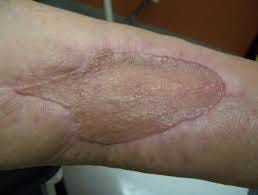
Unfortunately, the only treatment for antibiotic-induced colitis is a course of different antibiotics from that which caused the infection in the first place with all the resultant possible side effects associated with that. Even then, 20% of patients get re-occurrences of the infection. The more the infection re-occurs, the less successful each further course of antibiotics becomes.
Candidiasis.
Candidiasis occurs for a similar reason as clostridium difficile. However, instead of an overgrowth of bacteria caused by the destruction of the good bacteria in the gut, candidiasis is mostly caused by the proliferation of the candida albicans strain of fungus. One of the main causes is the use of antibiotics.
According to Merck, the pharmaceutical manufacturer, the problems associated with candidiasis can be extremely serious -
“If the infection spreads to other parts of the body, it is more serious. It can cause fever, a heart murmur, enlargement of the spleen, dangerously low blood pressure (shock), and decreased urine production. An infection of the retina and inner parts of the eye can cause blindness. If the infection is severe, several organs may stop functioning, and death can occur.”
Candidiasis can lead to a host of other problems. As the bacteria in the intestines is decimated leaving candida a free reign to overwhelm the gut, the fungus irritates the gut causing irritable bowel syndrome. In addition, the filamentous hyphae of the fungus penetrate the wall of the intestines leading to leaky gut syndrome.
When the gut lining is compromised, undigested food particles can enter the bloodstream. When this occurs, the body’s defence system targets the particles as foreign material and attacks them. Any subsequent time this particular food, or any other food that cross reacts with it, is eaten the body will overreact causing food allergies and potential auto-immune diseases such as rheumatoid arthritis, ankylosing spondylitis, multiple sclerosis, eczema, fibromyalgia and Raynaud's Syndrome.
Mitochondrial Damage
One of the most dangerous and unavoidable side effects of antibiotics is mitochondrial damage. This occurs because it is believed mitochondria were once bacteria and so they can be damaged in a similar fashion to the bacteria targeted by the drugs. This happens by the excessive production of Reactive Oxygen Species, a form of free radicals.
Damaged mitochondria, the power houses of our cells, can be devastating. The list of illnesses than can result from this are mentioned in an article in Molecular Nutrition and Food Research -
“Damage to mitochondria is now understood to play a role in the pathogenesis of a wide range of seemingly unrelated disorders such as schizophrenia, bipolar disease, dementia, Alzheimer's disease, epilepsy, migraine headaches, strokes, neuropathic pain, Parkinson's disease, ataxia, transient ischemic attack, cardiomyopathy, coronary artery disease, chronic fatigue syndrome, fibromyalgia, retinitis pigmentosa, diabetes, hepatitis C, and primary biliary cirrhosis.”
Basically, any time we take antibiotics we are potentially killing our own cells.
Hidden Antibiotics
Knowing the potential dangers of antibiotics may well discourage you from taking them but unfortunately it doesn’t help when you don’t actually know you are taking them. Prescription antibiotics are only part of the problem. Another major concern is the hidden use of antibiotics.
Antibiotics in the food chain
One of the main areas of hidden antibiotic use is in the agricultural industry where the drugs are not only used to treat sick animals but are also used to promote growth in farm animals.
Growth promoters are banned in the EU but are still used extensively worldwide. Even though the EU has banned the use of antibiotics to promote growth, they are still used for veterinary purposes and therefore end up in the food chain. One of the antibiotics used to promote growth is monensin which, ironically, is toxic to cattle and also dogs, pigs and horses. However, it has now been found to be toxic to humans as well and is known to cause damage to lungs, intestines and kidneys. It can also prove to be fatal. According to the American Journal of Kidney Disease after ingesting monensin the person suffered from –
“Severe rhabdomyolysis followed by acute renal failure, heart failure, and death.”
Another veterinary antibiotic used is salinomysin which is toxic to horses but can also effect humans. The Annals of Bioanalytical Chemistry states –
“Exposure of humans to salinomycin via inhalation or ingestion can cause severe toxicity.”
Consumption of meat from animals that have been fed large amounts of antibiotics could mean those eating the products could risk exposure to the drugs. Moreover, if the manure from antibiotic-fed animals is used in the growing of vegetables, the crops themselves have been shown to absorb the antibiotics. A University of Minnesota study found antibiotic residues in potatoes, lettuce, onions, corn and cabbage.
Antibiotics in the Water supply
Of course, the problem doesn’t end there. When manure containing antibiotics is spread on the land, they infiltrate the water supply too. A Colorado State University study found veterinary antibiotics in virtually every waterway they tested and noted -
“The potential toxic dangers of these compounds to fish, plants and other aquatic organisms – as well as to humans through drinking water – because water treatment plants generally cannot remove all of these compounds.”
Water contamination is also a problem in relation to human antibiotics. Residues of these are excreted and subsequently make their way into our drinking water. A paper published in Environmental Health Perspectives found contamination in ground, surface, natural and drinking water with the main antibiotics present being macrolides, quinolones and sulfonamides.
Antibiotics in Vaccines
One hidden source of antibiotics which most people are unaware of is vaccines. Aminoglycosides such as gentamycin, streptomycin and neomycin are used in various vaccines including MMR, chickenpox, meningitis, influenza, diphtheria, pertussis and hepatitis.
As the vast majority of vaccines are given to children their antibiotic content can cause many serious health issues. As previously mentioned, streptomycin can induce coma in infants and gentamycin can cause encephalopathy and that there is no safe dosage. Any form of encephalopathy is dangerous but is even more so in children as the Archives of Disease in Childhood states –
“Childhood encephalopathy is an uncommon but significant paediatric presentation and is associated with significant mortality and long-term morbidity in survivors.”
Another type of antibiotic used in vaccines is Polymixin B. Polymixins work by making the bacterial cell walls more permeable. A number of side effects are associated with their use including anaphylaxis, neurotoxicity and kidney damage.
Only Use as a Last Resort
Antibiotics create a host of health problems from the creation of superbugs to heart failure, liver and kidney damage, Toxic Epidermal Necrolysis, serious infections, mental health problems, cancer, anaphylaxis and death. Every effort should be made to prevent them entering the food chain and the water supply and they should be removed from all vaccines. Rather than being viewed as panacea for all forms of infection to be handed out as a first line of defence, they should be viewed as extremely dangerous drugs that should only be used as a very last resort.
A verison of this article was originally published in Nexus magazine in December 2017

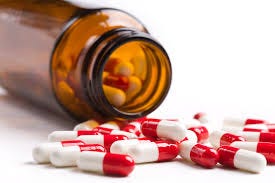



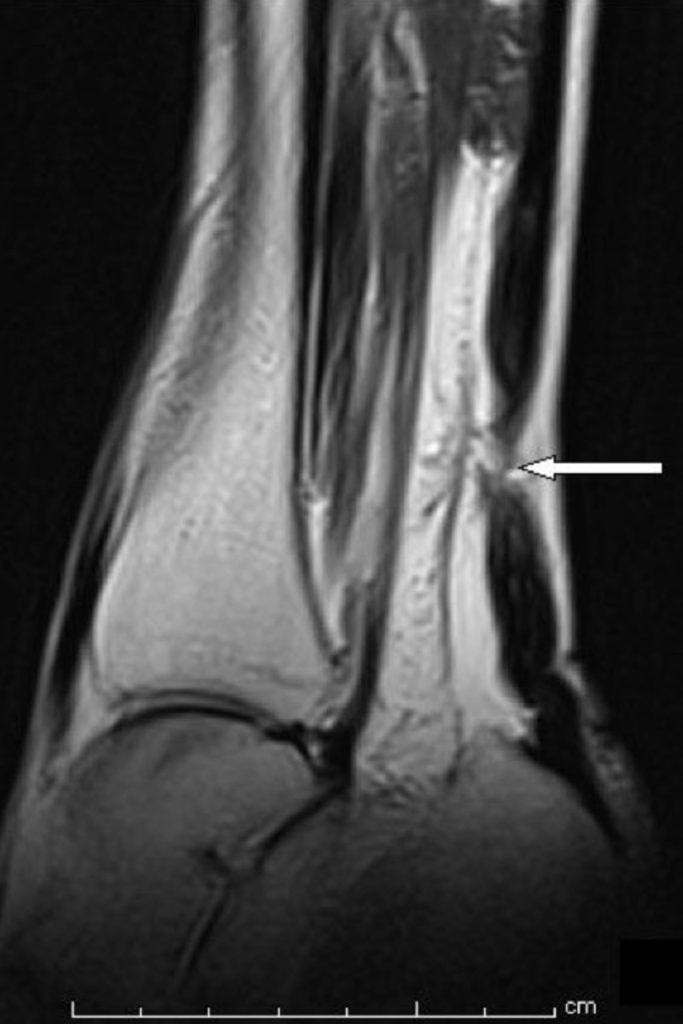


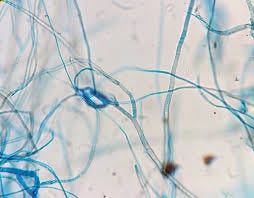
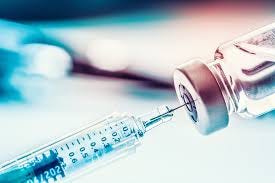
Yikes. Sounds like confirmation of my layman's operating understanding for some time now that antibiotics are to the human system what the atom bomb was to Nagasaki.